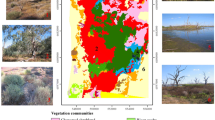Abstract
As an active microwave remote sensing imaging sensor, Synthetic Aperture Radar (SAR) plays an important role in earth observation. Here we establish a SAR system based on the platform of the moon. This will aid large-scale, constant, and long-term dynamic Earth observations to better meet the needs of global change research and to complement the space borne and airborne earth observations. Lunar-based SAR systems have the characteristics of high resolution and wide swath width. The swath width could be thousands of kilometers in the stripe mode and it could cover 40% of earth’s surface with 10 meters or even higher spatial resolution in the scanning mode. Using the simplified observation model, here we quantitatively analyze the spatial resolution and coverage area of lunar-based SAR and simulate the observation on the Qinghai-Tibet plateau and the Amazon plain. The results show that this system could provide near 100% daily coverage of the Qinghai-Tibet plateau, whereas 40% to 70% daily coverage of the Amazon plain. Lunar-based SAR could provide large-scale, long-term and stable time series data in order to support future research of global change.
Similar content being viewed by others
References
Bruno D, Hobbs S, Ottavianelli G. 2006. Geosynchronous synthetic aperture radar: Concept design, properties and possible applications. Acta Astronaut, 59: 149–156
Bruno D, Hobbs S. 2010. Radar imaging from geosynchronous orbit: Temporal decorrelation aspects. IEEE Trans Geosci Remote Sens, 48: 2924–2929
Carruthers G, Page T. 1972. Apollo 16 far-ultraviolet camera/spectrograph: Earth observations. Science, 177: 788–791
Curland J, Mcdonough R. 1991. Synthetic Aperture Radar Systems and Signal Processing. New York: John Wiley & Sons Inc
Fornaro G, Franceschetti G, Lombardini F, et al. 2010. Potentials and limitations of Moon-borne SAR imaging. IEEE Trans Geosci Remote Sens, 48: 3009–3019
Guo H. 2000. Radar for Earth Observation: Theory and Applications. Beijing: Science Press
Henderson F, Lewis A. 1998. Manual of Remote Sensing: Principles and Applications of Imaging Radar. 3rd ed. New York: John Wiley & Sons Inc
Kiyo T, Jean P. 1983. Synthetic aperture radar imaging from an inclined geosynchronous orbit. IEEE Trans Geosci Remote Sens, GE-21: 324–329
Madsen S, Edelstein W, DiDomenico L, et al. 2001. A geosynchronous synthetic aperture radar: For tectonic mapping, disaster management and measurements of vegetation and soil moisture. IGARSS’01. 447–449
Moccia A, Renga A. 2010. Synthetic aperture radar for Earth observation from a lunar base: Performance and potential applications. IEEE Trans Aero Elec Sys, 46: 1034–1051
Ouyang Z. 2005. Introduction to Lunar Science. Beijing: China Astron Publ House
Palle E, Goode P R. 2009. The lunar terrestrial observatory: Observing the Earth using photometers on the Moon’s surface. Adv Space Res, 43: 1083–1089
Rignot E, Mouginot J, Scheuchl B. 2011. Ice flow of the Antarctic ice sheet. Science, 333: 1427–1430
Rosenqvist A, Shimada M. Chapman B, et al. 2000. The global rain forest mapping project—A review. Int J Remote Sens, 21: 1375–1387
Rosenqvist A, Shimada M, Ito N, et al. 2007. ALOS PALSAR: A pathfinder mission for global-scale monitoring of the environment. IEEE Trans Geosci Remote Sens, 45: 3307–3316
Shi J C, Du Y, Du J Y, et al. 2012. Progresses on microwave remote sensing of land surface parameters. Sci China Earth Sci, 55: 1052–1078
Steffen W, Sanderson A, Tyson P, et al. 2004. Global Change and The Earth System: A Planet Under Pressure. 5th ed. New York: Springer
Zhang D W, Guo H D, Liu G, et al. 2011. Sun-Earth-Moon system simulation technology based on OpenGL. 24th China Symposium on Space Exploration
Author information
Authors and Affiliations
Corresponding author
Electronic supplementary material
Rights and permissions
About this article
Cite this article
Guo, H., Ding, Y., Liu, G. et al. Conceptual study of lunar-based SAR for global change monitoring. Sci. China Earth Sci. 57, 1771–1779 (2014). https://doi.org/10.1007/s11430-013-4714-2
Received:
Accepted:
Published:
Issue Date:
DOI: https://doi.org/10.1007/s11430-013-4714-2




